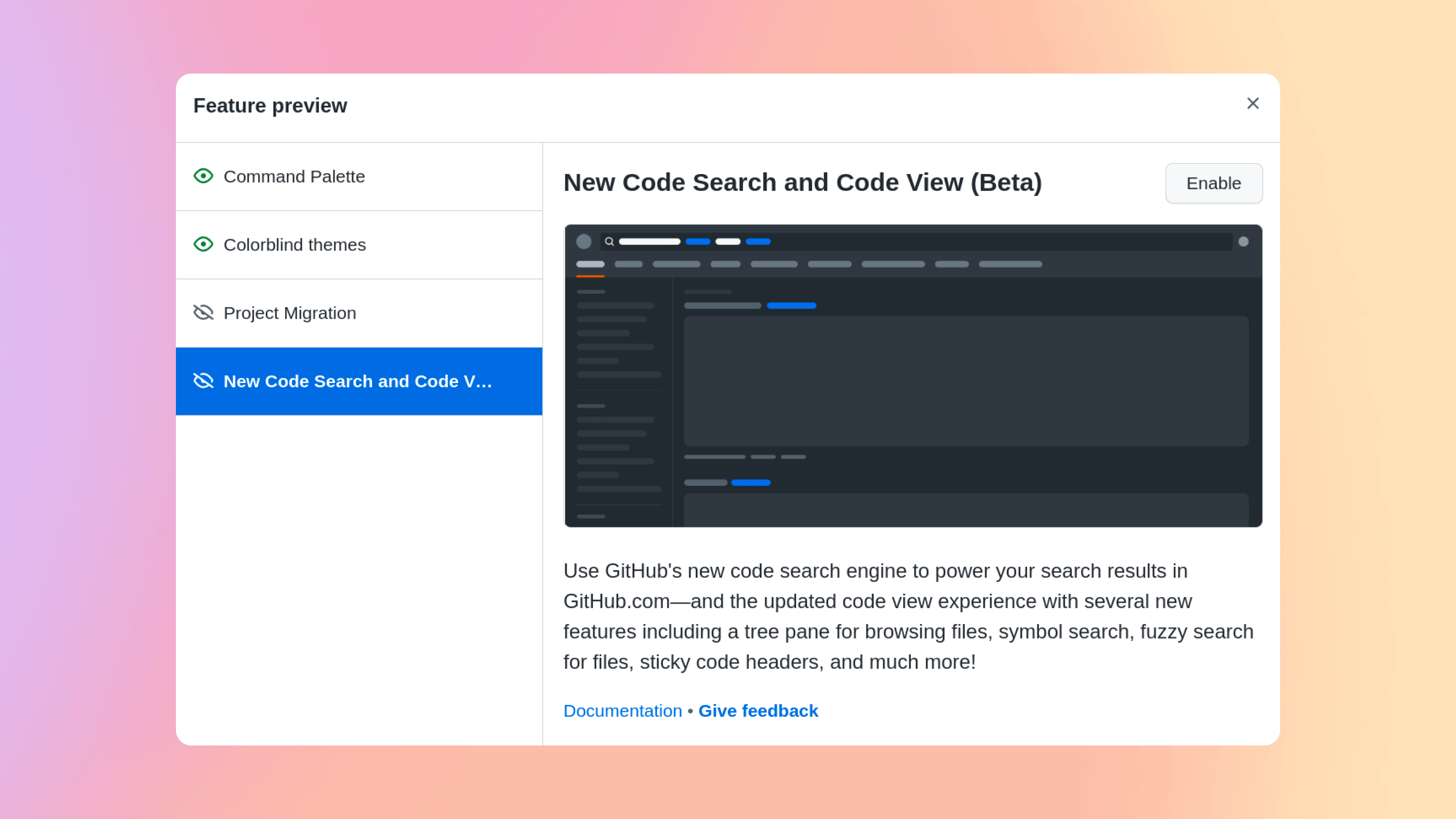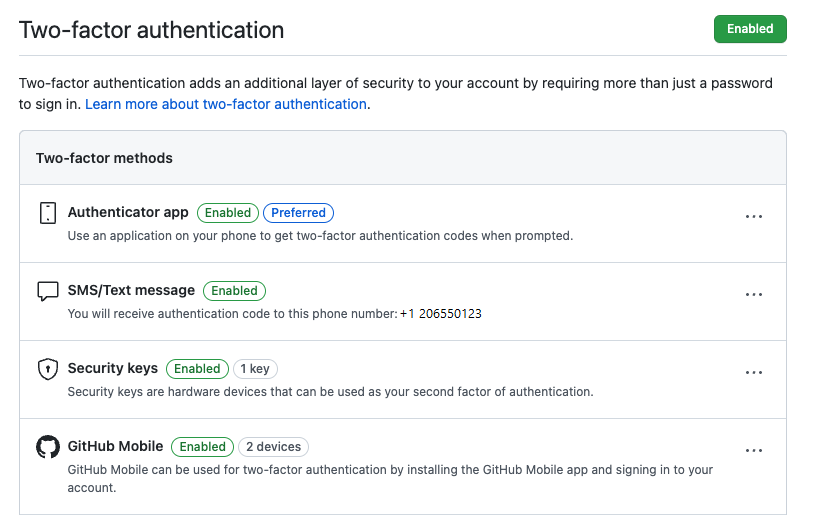Reading and understanding code is an absolutely critical task for software developers. Research suggests developers spend far more time reading code than writing it. Reviewing a pull request, planning a new feature, researching a system’s architecture, or determining how to fix a bug are all activities that rely on finding critical information scattered across the codebase.
That’s why we’ve built the new code search and code view—to help developers search, navigate, and understand their code, their team’s code, and the world’s open source code.
At GitHub Universe in November we announced the beta waitlist for the new code search and code view. Today we’re removing that waitlist. Now any user can access the new search and code viewing experience using this link, or via the feature preview menu. To access the feature preview menu, click your avatar at the top-right of a GitHub page and select Feature preview. Then select the beta and click the Enable button.

This beta brings three powerful new capabilities to GitHub.com. First, an entirely new search interface, allowing you to construct powerful queries with suggestions, completions, and the ability to slice and dice your results.
The second capability is our entirely new code search engine, capable of searching and even understanding code. It delivers more relevant results with incredible speed. Curious about how it works? Read about the groundbreaking technology behind the new code search in the GitHub blog earlier this month.
The third capability is a redesigned code view. The new view integrates search, browsing, and code navigation, allowing developers to rapidly traverse their code to find answers.
This is a big step forward for code search and navigation at GitHub, but we’re far from done. Check it out yourself, and share your feedback with us here.


















